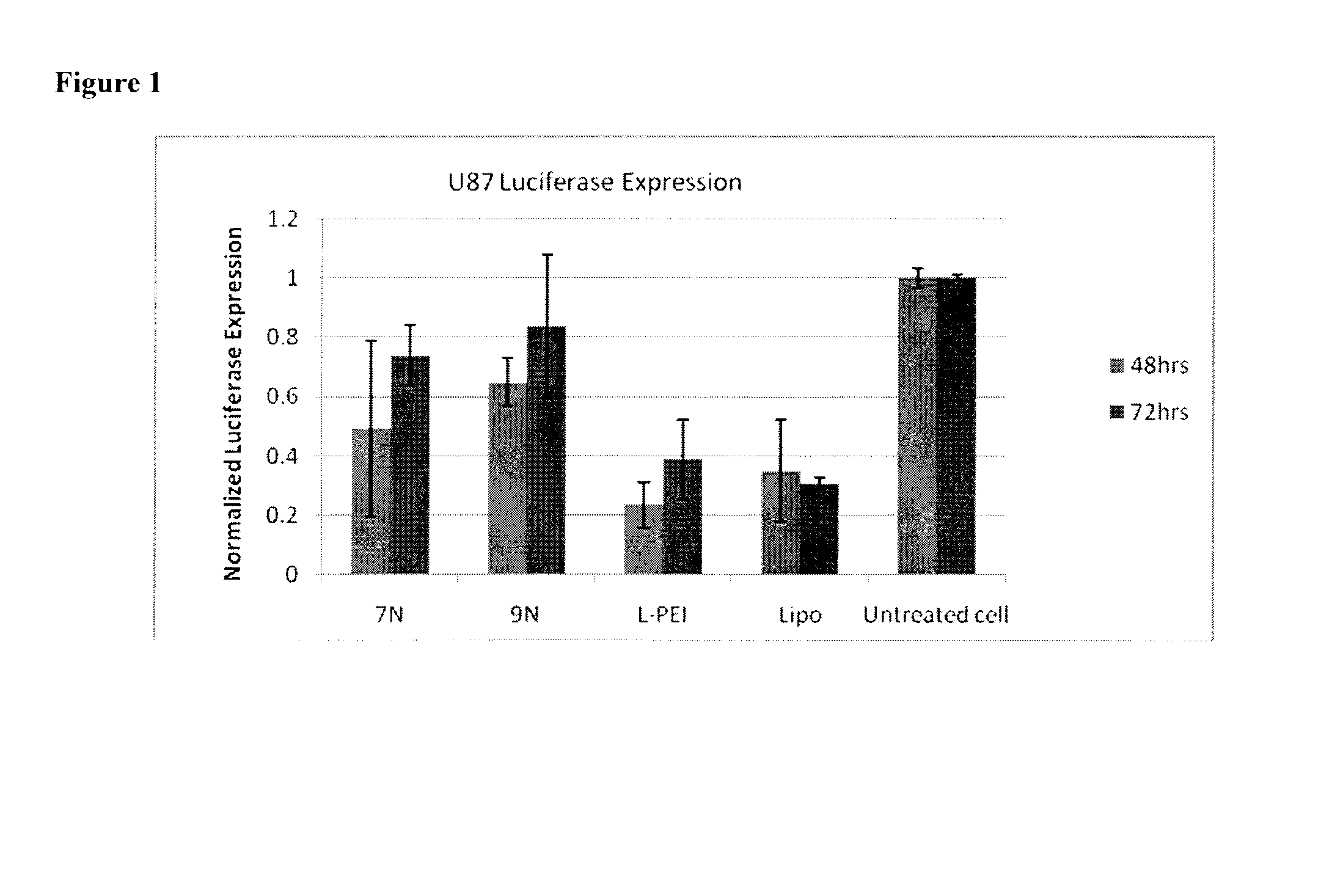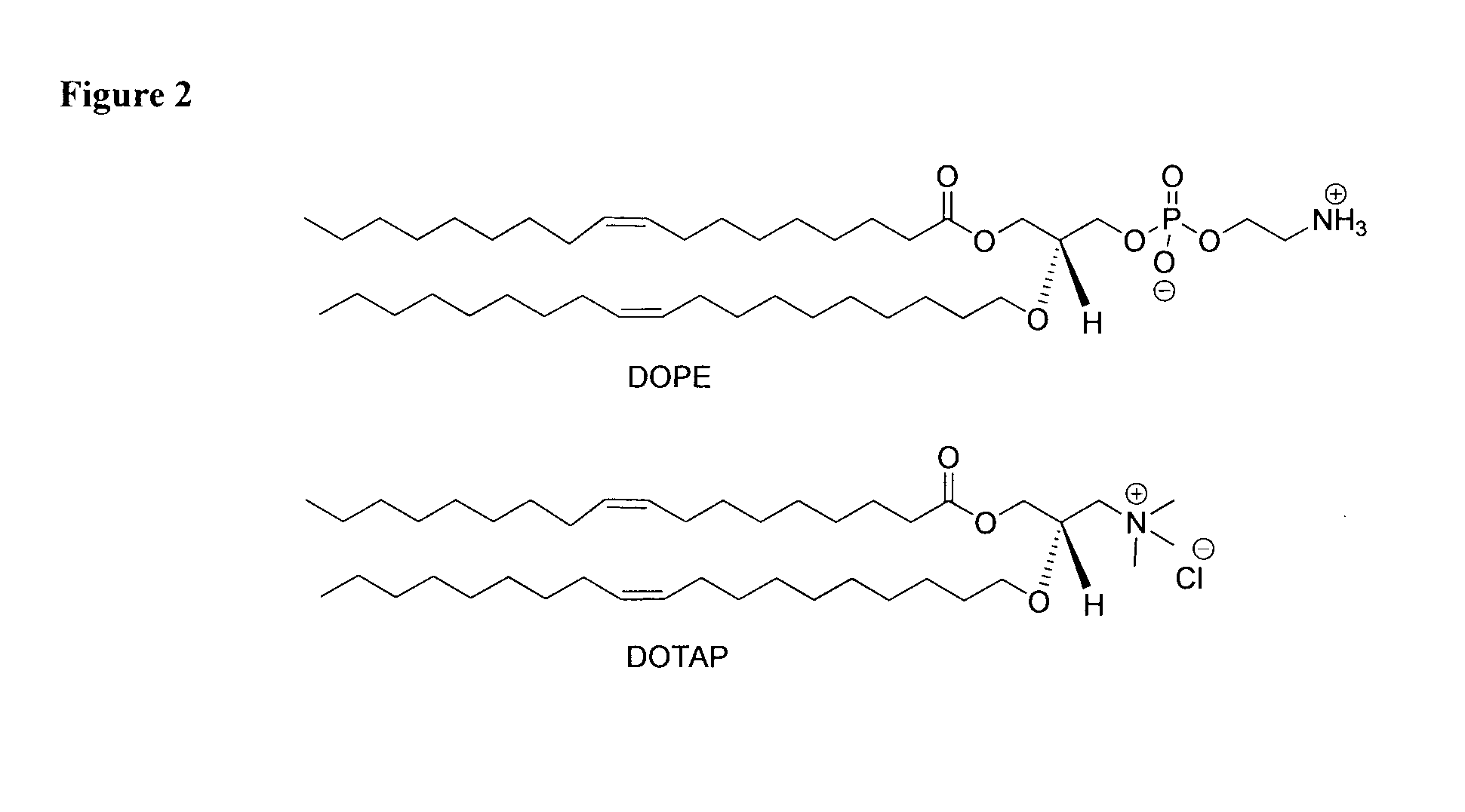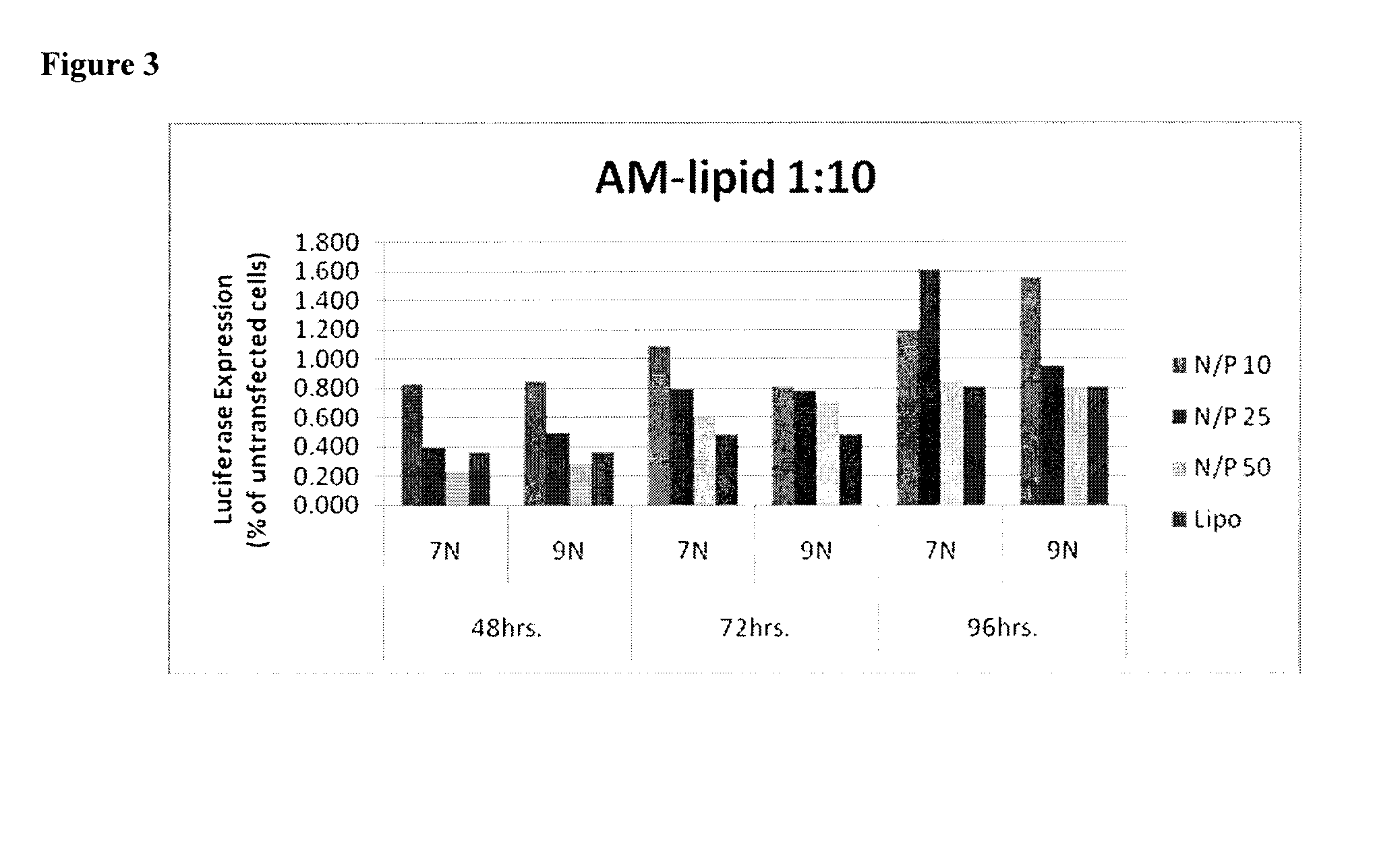Amphiphilic macromolecules for nucleic acid delivery
a technology of amphiphilic macromolecules and nucleic acids, applied in the direction of bio organic chemistry, chemistry apparatus and processes, etc., can solve the problems of unsuitable use, lack of effective systems that are biocompatible and versatile, etc., and achieve the effect of efficiently delivering a variety of nucleic acids
- Summary
- Abstract
- Description
- Claims
- Application Information
AI Technical Summary
Benefits of technology
Problems solved by technology
Method used
Image
Examples
example 1
A Cationic Polymer for Nucleic Acid Delivery
[0147]A representative compound (polymer) of the invention was prepared and evaluated as a nucleic acid delivery vehicle by measuring its hydrodynamic diameter and its zeta potential.
[0148]The compound 7 nM was synthesized as shown in Scheme A3.1. In this synthetic method, the formation of oligomers is controlled by stoichiometry and the slow addition of the starting materials via the syringe pump.
[0149]Successful synthesis of the polymer was verified by proton nuclear magnetic resonance (1H NMR) spectroscopy and the molecular weight was determined by gel permeation chromatography (GPC) relative to PEG standards. Due to the abundance of PEG in the polymer (˜83% of protons), the presence of new protons in the 1H NMR spectra were difficult to detect, particularly from 0.8 to 2.4 ppm where the methylene protons of the hydrophobic chains comprise the majority of that region. Thus, the spectra were monitored for the disappearance of the protons...
example 2
Alternative Route to Compound 7 nM
[0151]In Example 1, the only control over the formation of oligomers is the stoichiometry and the slow addition of the starting materials using the syringe pump. To better control the synthesis of these polymers and isolate a more pure product, two protection schemes were designed and evaluated.
[0152]To control the final structure of 7 nM, a protection step was added to the synthetic procedure. As a model synthesis, only 7 nM was evaluated. The protection step, the addition of benzyl chloroformate (CBZ-Cl) was added following the addition of tetraethylene pentamine to 2, as shown in Scheme A3.2. It should be noted that an effort was made to isolate and purify 3, but once it was isolated as a white solid, it was insoluble in further solvents for chemical characterization. Thus, in the final synthesis, it was not isolated. The CBZ protecting group was removed by hydrogenation in the final step of the synthesis.
[0153]In comparison to the 7 nM synthesiz...
example 3
Evaluation of the siRNA Delivery Efficacy of Compound 7N (Compound 7N is the Same Compound as Compound 7 nM) and 9N (Compound 9N is Described in Example 5)
[0155]The siRNA delivery efficacy of the cationic AM complexes was tested using a human primary glioblastoma cell line (U87 MG). By loading the cationoic AMs complexes with anti-luciferase siRNA at N / P ratio of 50, knockdown of luciferase expression was achieved and quantified at 48 hrs and 72 hrs. FIG. 1 shows the knockdown efficacy of compounds 7N and 9N compared to linear-polyethylenimine (L-PEI) and lipofectamine (Lipo). It has been demonstrated that cationic AMs have lower cytotoxicity than the L-PEI and lipofectramine
PUM
 Login to View More
Login to View More Abstract
Description
Claims
Application Information
 Login to View More
Login to View More - R&D
- Intellectual Property
- Life Sciences
- Materials
- Tech Scout
- Unparalleled Data Quality
- Higher Quality Content
- 60% Fewer Hallucinations
Browse by: Latest US Patents, China's latest patents, Technical Efficacy Thesaurus, Application Domain, Technology Topic, Popular Technical Reports.
© 2025 PatSnap. All rights reserved.Legal|Privacy policy|Modern Slavery Act Transparency Statement|Sitemap|About US| Contact US: help@patsnap.com



